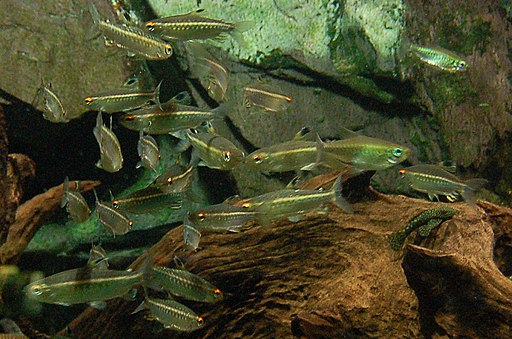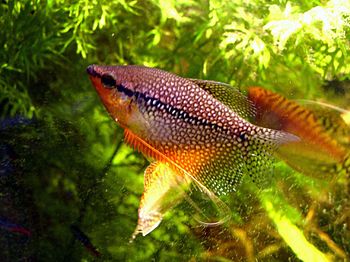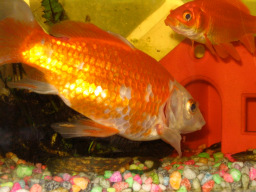Family: Characidae
Species: Arnoldichthy spilopterus – Niger Tetra – Big-Scaled African Characin
Size: 7cm (2 three quarter inch)
Diet: Omnivorous
Tank levels: All
Habitat: Streams in Nigeria
Remarks: It needs plenty of swimming space and plants in which to hide.
Other Names: Arnold’s Red-eye Characin, Red-eye Characin, Red-eye Tetra
Comments: Arnoldichthy spilopterus The lower half of the body is silvery blue-green, shading to a pale belly. The dorsal fin has a white-edged dark blotch, and the caudal fin is grayish silver. Males have an orange and black anal fin and yellowish pelvic fins. Females anal fins have a dark blotch
Wikipedia: The Arnoldichthys spilopterus is kept as an aquarium fish. It is the only member of its genus. It is considered to be a freshwater species that are found in a pelagic range within a tropical climate. The average length of the Arnoldichthys spilopterus as an unsexed male is about 9.6 centimeters or about 3.7 inches. Their diet consists of worms, insects, and crustaceans. When kept in an aquarium for breeding, a female can lay about 1,000 eggs. They can hatch at the time of 30-34 hours. If kept in an aquarium, it is recommended to keep a group of at least five of this species together. The minimum size of an aquarium that is adequate for this species is about 100 centimeters.
This species is considered to be vulnerable to becoming an endangered species. In Nigeria, this species is found in less than ten different areas. Another influence that affects the population of this species in its natural state is oil exploration, deforestation, and pollution. There is also a population trend that is decreasing due to the fish trade that the Arnoldichthys spilopterus has become a part of for the aquatic system and commerce.
| By Gary Bolton This fish comes from the “Tropical Fish” family species of fish. I hope you enjoyed this fish profile that I put together to help people to choose the right fish for the right aquarium tank setup you may own, or be thinking of buying in the future. Article Source: EzineArticles |









